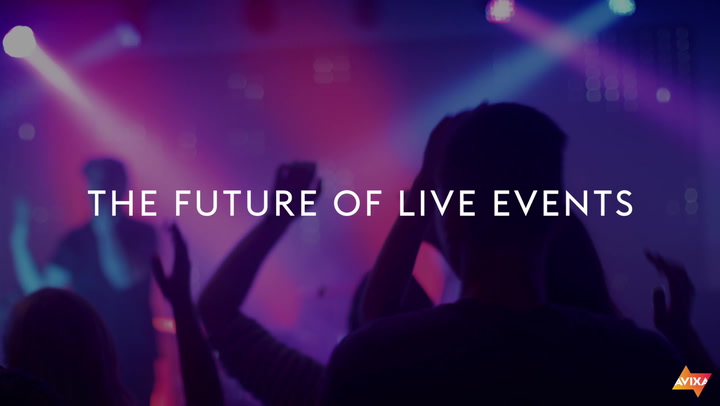
What Is a Hot Mic? Understanding the Risks of Live Audio
Imagine speaking candidly, thinking your words are private, only to find out they’ve been instantly broadcast around the world. This all-too-common mishap arises from something called a "hot mic”—a phenomenon that has caught politicians, celebrities, and even everyday professionals off guard, leading to sometimes disastrous or career-altering moments.
An off-handed joke is one thing, but when a president's sound check makes an entire nation question their safety (See Ronald Reagan's 1984 Hot Mic debacle) it can shape public perception and spark global controversy. A hot mic incident can happen to anyone operating in an AV environment, whether you're a sound engineer, presenter, or event coordinator. These seemingly small slip-ups underscore the importance of proper AV practices and awareness.
But what is a hot mic, exactly? And why does it hold the power to wreak havoc for live events, PR professionals, and anyone in the public eye? Whether you’re new to live event production or simply curious about why "hot mics" regularly trend on social media, we’ll break it all down for you.
What Is a Hot Mic?
A hot mic, short for "hot microphone," refers to a microphone that is live and transmitting sound, often without the speaker's awareness. When a mic is hot, it picks up and broadcasts anything said near it, whether or not that is the person’s intention.
For example, during live broadcasts or events, microphones often remain on even when the speaker thinks they've been turned off. This leaves room for both accidental humor and disastrous errors to surface in real time or in recordings.
Why Do Hot Mics Pose a Risk for PR and Live Events?
Hot mics have developed a notorious reputation, particularly because they often expose off-the-cuff remarks not meant for the public. These unfiltered moments can lead to embarrassing or damaging headlines, whether you’re a world leader, an athlete, or an event host.
Public figures have famously faced hot mic incidents that made waves in media and public discussions. These moments are amplified not because they happen exclusively to high-profile individuals, but because of the visibility and scrutiny those individuals face. In reality, anyone speaking into a microphone is equally susceptible to a hot mic moment.

Common Scenarios Where Hot Mics Cause Trouble
From live-streamed conferences to impromptu media interviews, hot mics can pop up in the most unexpected places. Here are the situations where they’re most likely to create issues:
1. Live Broadcasting
This is probably the most common arena for hot mic incidents. During television broadcasts, radio shows, and online live streams, mics are often left on during ad breaks or between segments. They often reveal everything from personal details about the speakers to inappropriate jokes.
2. Meetings and Webinars
The hybrid and work-from-home era has multiplied the occasions where hot mics lead to disruptions. A forgotten mute button during a Zoom meeting or webinar has revealed everything from unprofessional comments to personal conversations.
3. Behind-the-Scenes Crews and Technicians
For AV professionals and live event producers, improperly muting microphones when speakers step off stage or staff communicates can inadvertently capture sensitive instructions or candid remarks. This often leads to a very angry speaker, often taking out their frustration on live event techs.
Common Hot Mic Moments
Hot mic blunders have made headlines for decades. Here are some notable examples:
1. Presidential Hot Mic Moments
Presidents Barack Obama, George W. Bush, and most recently Donald Trump have been involved in notable hot mic situations, demonstrating how powerful figures are not immune to this slip-up. Presidents and other world leaders can have their off-the-record remarks heavily scrutinized when they never intended them to travel past the podium. While certainly not limited to American leaders, these incidents underline how hot mics are just an unfortunate part of being constantly in the spotlight.
2. Newscasters Unfiltered
Numerous TV anchors and reporters have been caught on hot mics, especially when they wrongly assume their segment is over. They tend to let out their opinions or frustrations, oftentimes about producers or camera operators, letting a live audience know how they really feel. These moments quickly go viral, often requiring public apologies.
3. Sporting Events
Coaches, players, and even referees are regular victims of hot mics at live sporting events. Whether it’s tactical comments or heated emotions, their words can reveal more than intended.
How to Avoid Hot Mic Mishaps
Regardless of whether you’re producing live events or speaking into the mic yourself, you can minimize the chances of falling victim to a hot mic moment:
1. Train Your AV Team
Teams handling microphones and soundboards should be trained to mute microphones appropriately and double-check audio settings, especially during breaks or transitions between speakers.
2. Educate Speakers
Teach speakers to treat every mic as if it’s live. Reinforcing this mindset helps curb unfiltered comments when they step away from the stage or take a break during interviews.
3. Use Clear Visual Indicators
Audio professionals should use monitoring systems with clear visual cues (like making sure a hot mic always displays a red light, for example). This ensures speakers and crews always know when their words will be amplified.
4. Implement a Mute Button Policy
For setups like conferences or web-based meetings, encourage the regular use of mute buttons until it’s time for the speaker to present. IT professionals can often control whether an audience is automatically muted when the call begins, which is usually a best practice for large-scale meetings.
Why Hot Mics Matter in Live Event Production
For AV professionals, hot mics aren’t just an issue of public gaffes. They can disrupt the flow of an event, compromise technical professionalism, and even breach confidentiality agreements. Whether it’s a keynote speech for an industry conference or a team meeting, mitigating hot mic risks ensures events run smoothly.
AV professionals should integrate safeguards into production workflows, including testing audio devices, coordinating clear speaker instructions, and monitoring soundboards diligently.
If you’re interested in live event mishaps, check out AVIXA Xchange for 5 Infamous Live Event Failures and What to Learn from Them.
Photo credit: Getty Images/gollykim









